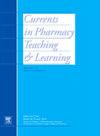Enhancing pharmaceutical calculation proficiency: Exploring self-directed learning and self-reinforcement assessment strategies for student success
IF 1.4
Q3 EDUCATION, SCIENTIFIC DISCIPLINES
引用次数: 0
Abstract
Introduction
Proficiency in pharmaceutical calculations is essential for pharmacy students, particularly for their role in patient care. This study is to explore the impact of self-directed learning (SDL) and self-reinforcement assessment (SRA), (SDL/SRA), strategies on student performance in pharmaceutical calculations at [COP name].
Methods
The study was conducted from 2020 to 2022, which included first-year pharmacy students. The calculation curriculum comprised a pre-pharmacy refresher, a primer program, a comprehensive course, and an online SDL program. SDL/SRA methodologies were introduced in 2021 and 2022 to enhance student engagement and learning outcomes. Data was collected through course evaluations, anonymous surveys, and comparative performance analysis.
Results
The implementation of SDL/SRA in 2021 and 2022 led to a notable improvement in student grades, with an increase of 13–17 % compared to 2020. Additionally, the failure rates dropped significantly from 30 % in 2020 to 2 % and 12 % in 2021 and 2022, respectively. Student feedback reflected a higher level of engagement and satisfaction with the course structure and the resources provided. Additionally, the analysis also identified challenges, particularly in understanding complex calculations and applying formulas to real-world scenarios.
Conclusion
SDL/SRA strategies have the potential to effectively enhance student performance and engagement in pharmaceutical calculations. However, the study's limitations, such as being conducted at a single COP, the absence of demographic data, variations in teaching formats between online and onsite, and reliance on student feedback rather than direct analytics, highlight the need for further research to validate these findings across diverse educational contexts.
提高药物计算能力:探索学生成功的自主学习和自我强化评估策略
对药学专业的学生来说,精通药物计算是必不可少的,尤其是在病人护理方面。本研究旨在探讨自主学习(SDL)和自我强化评估(SRA) (SDL/SRA)策略对药学计算学生成绩的影响。方法研究时间为2020 - 2022年,研究对象为药学一年级学生。计算课程包括药学前复习、初级课程、综合课程和在线SDL课程。SDL/SRA方法于2021年和2022年引入,以提高学生的参与度和学习成果。通过课程评估、匿名调查和比较绩效分析收集数据。结果在2021年和2022年实施SDL/SRA后,学生成绩显著提高,与2020年相比提高了13 - 17%。此外,失败率从2020年的30%大幅下降到2021年和2022年的2%和12%。学生的反馈反映了对课程结构和提供的资源的更高程度的参与和满意度。此外,分析还发现了挑战,特别是在理解复杂计算和将公式应用于实际场景方面。结论sdl /SRA策略有可能有效提高学生在药物计算中的成绩和参与度。然而,该研究的局限性,如在单一COP进行,缺乏人口统计数据,在线和现场教学格式的差异,以及依赖学生反馈而不是直接分析,突出了进一步研究的必要性,以在不同的教育背景下验证这些发现。
本文章由计算机程序翻译,如有差异,请以英文原文为准。
求助全文
约1分钟内获得全文
求助全文
来源期刊

Currents in Pharmacy Teaching and Learning
EDUCATION, SCIENTIFIC DISCIPLINES-
CiteScore
2.10
自引率
16.70%
发文量
192
 求助内容:
求助内容: 应助结果提醒方式:
应助结果提醒方式:


